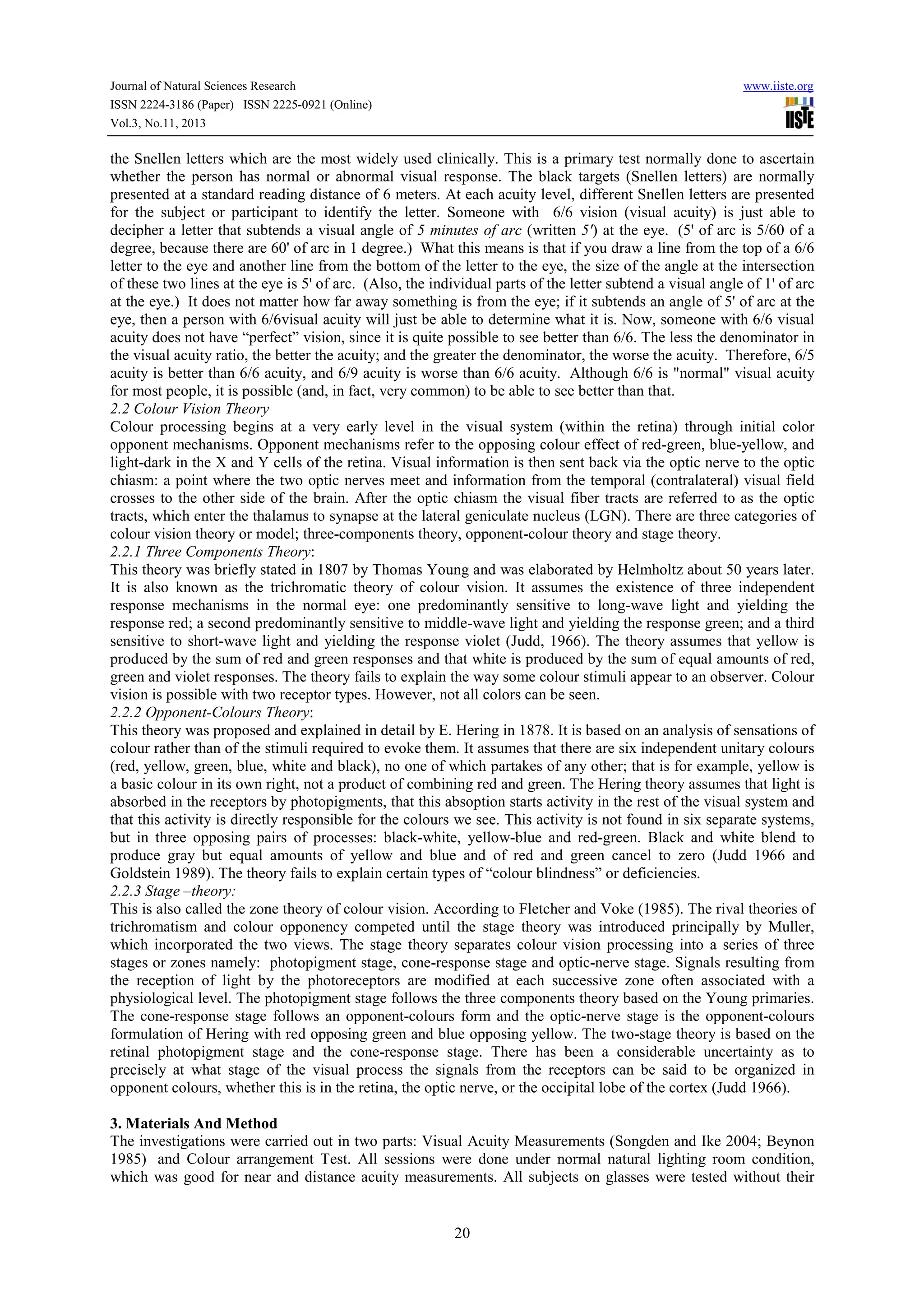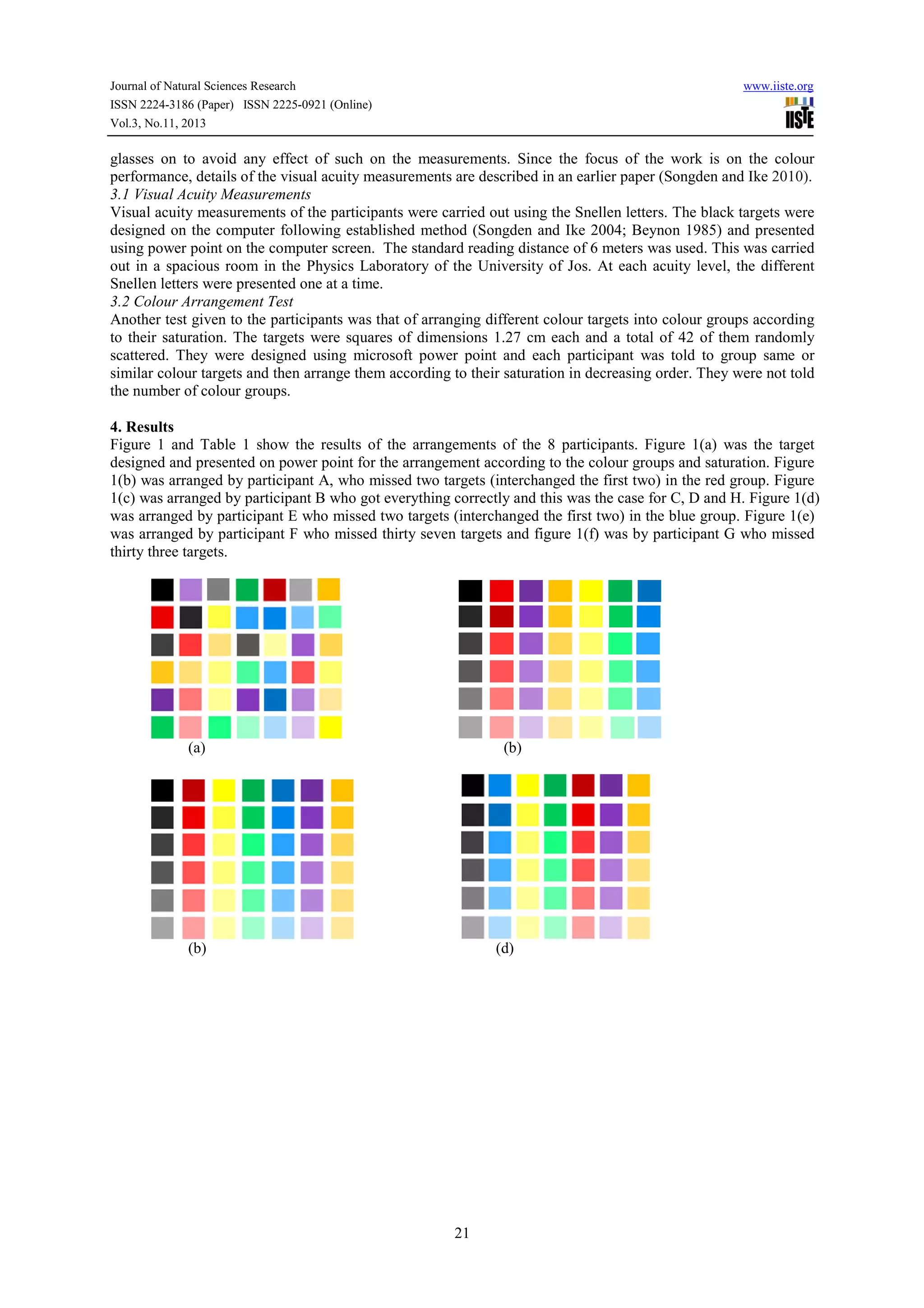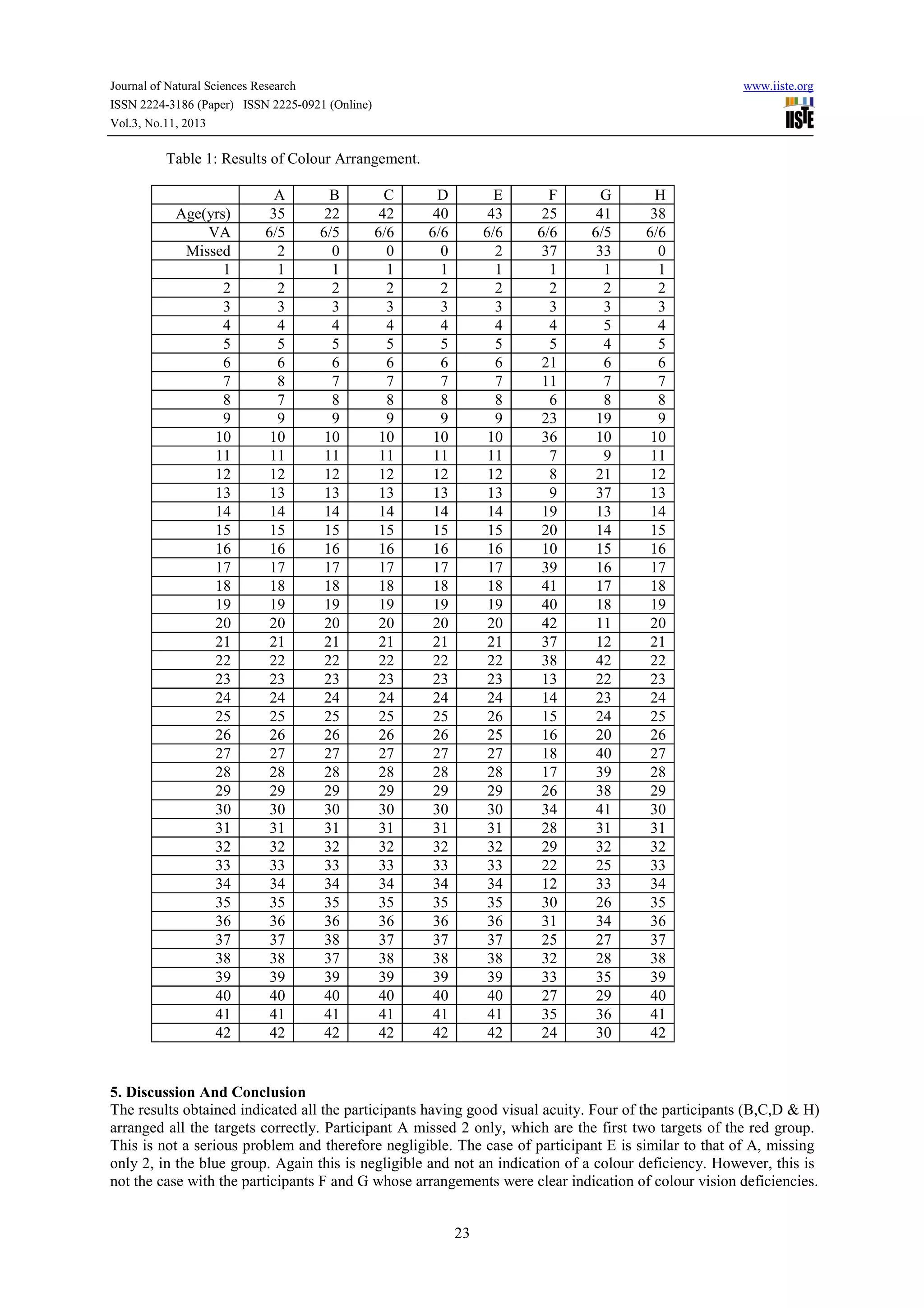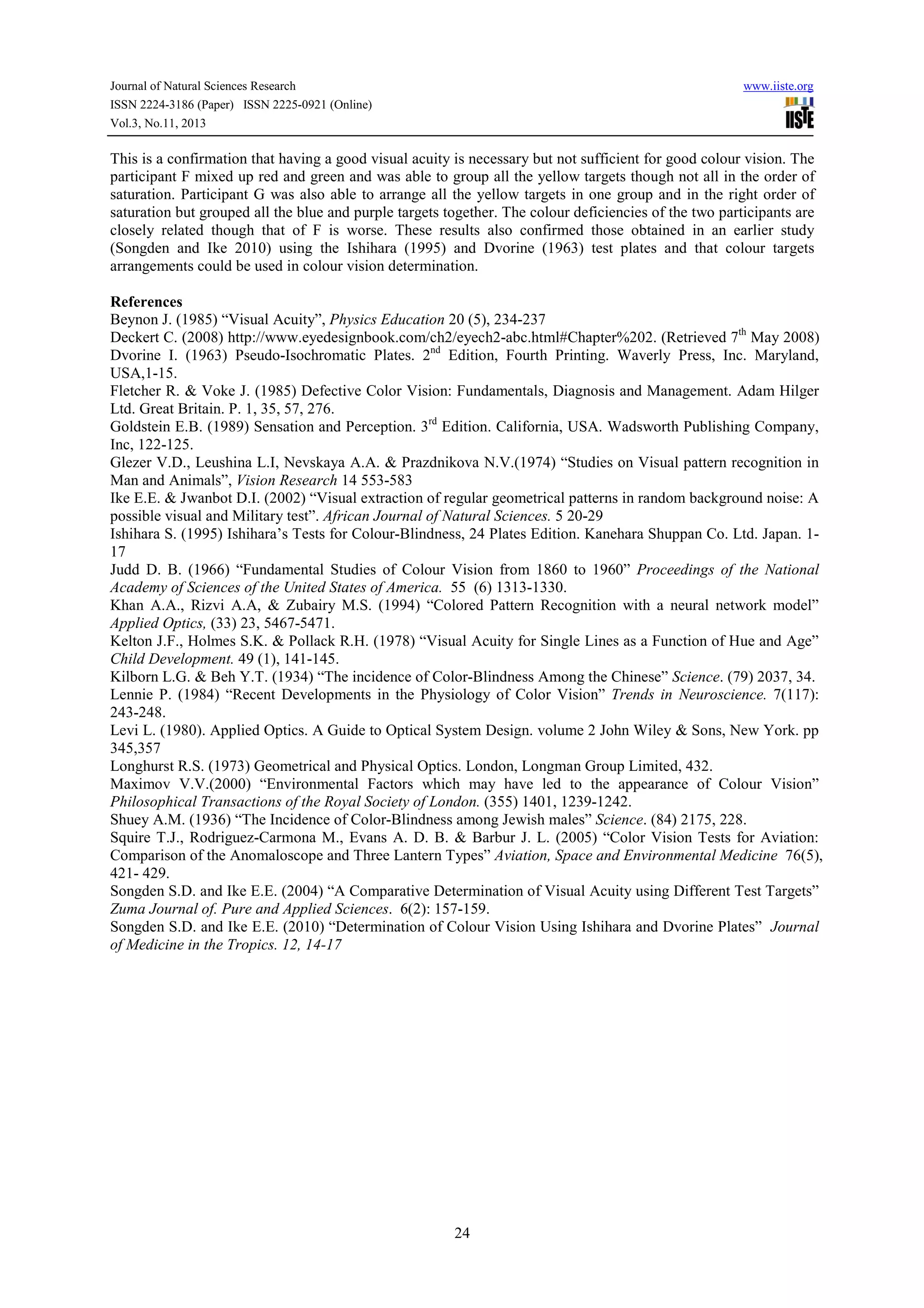The document summarizes a study that investigated colour vision performance through visual acuity and colour arrangement tests. 8 participants had their visual acuity measured using Snellen letters and were then asked to arrange 42 colour targets into groups based on colour and saturation. Most participants were able to correctly arrange the colours, though a few made minor mistakes by interchanging targets within colour groups. The results confirmed that good visual acuity is necessary but not sufficient for good colour vision performance.






